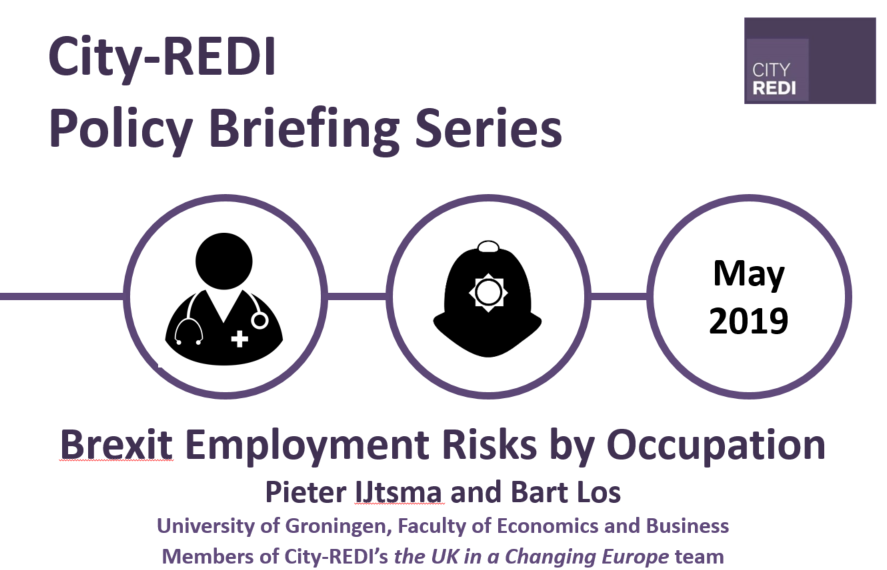 Brexit will cause impediments to exports from the UK to the EU. These will affect UK sectors to different extents. Some sectors sell large shares of their output to EU markets, while others do not. These differences have an impact on the degree to which specific occupational types of employment are exposed to trade risks associated with Brexit. Using well-established methods based on global input-output tables (which quantify the world’s production structure) and detailed data on employment by occupational group and industry, we develop an occupational risk indicator.
Brexit will cause impediments to exports from the UK to the EU. These will affect UK sectors to different extents. Some sectors sell large shares of their output to EU markets, while others do not. These differences have an impact on the degree to which specific occupational types of employment are exposed to trade risks associated with Brexit. Using well-established methods based on global input-output tables (which quantify the world’s production structure) and detailed data on employment by occupational group and industry, we develop an occupational risk indicator.
Focusing on broad occupational groups, we find that almost 12 per cent of UK employment of “skilled agricultural, forestry and fisheries workers” is exposed to Brexit’s export risks. The second most exposed group are “plant and machine operators”(11 per cent). Among the broad groups, “services and sales workers” are least exposed (3 per cent). Among occupations defined at a more fine-grained level, employment of veterinary workers is most exposed (36 per cent). Finally, risk levels for male and female workers are different: the risk indicator for male employment is 8 per cent, whereas it amounts to 5 per cent for female employment.
Download a copy of the policy briefing.
This policy briefing was written by Pieter IJtsma and Bart Los, University of Groningen, Faculty of Economics and Business and members of City-REDI’s the UK in a Changing Europe team.
To sign up for our blog mailing list, please click here.
Doctor Icon by Wilson Joseph from the Noun Project
Police Helmet by Daniel Turner from the Noun Project
